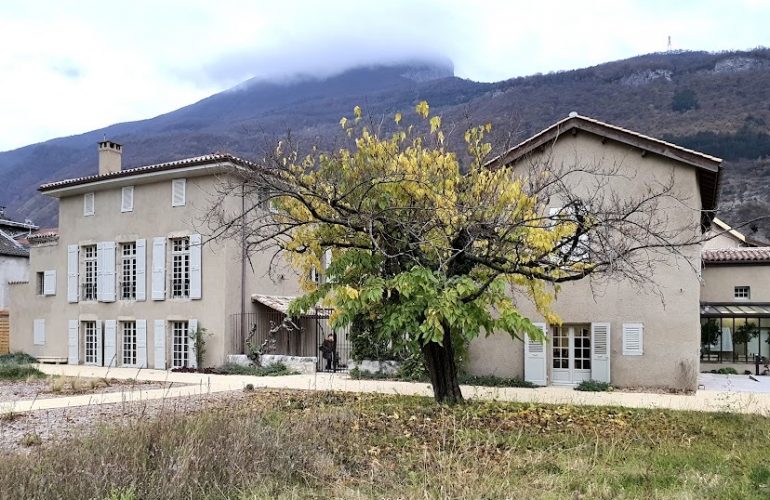A new museum – le Musée Champollion -has opened its doors to visitors in Vif, France. “Artdecision” offers an interview with Professor, Senior Reseacher of Institute for Papyrology of University of Heidelberg – Dr. Rodney Ast about Jean-François Champollion’s discovery and about contemporary Egyptology.

Rodney Ast
Irina Vernichenko: What is the future of Egyptology?
Rodney Ast: The 19th and 20th century marked intense periods of discovery, whereas the 21st has created good conditions for wide circulation of these discoveries. Substantial improvements in technology mean that this complex society can be better understood and communicated to the public. The fact that there are increasingly so many virtual platforms for experiencing ancient Egypt ensures that larger audiences can be reached in the future.Those interested in the Rosetta stone might want to check out the French site http://projetrosette.info/page.php?Id=1. And the Egyptian Exploration Society offers links to more general resources: https://www.ees.ac.uk/pages/site/young-explorers-club/category/digital-resources
IV: Are there still any texts in ancient Egyptian that are not understood?
RA: There are many texts that are not understood or only partially so, whether because of physical damage or insufficient understanding of the language. This presents challenges that keep language experts engaged. Any newly discovered text is likely to include previously unencountered puzzles!
IV: Libraries (associated with temples) were called a “houses of life”. Please tell us about writing, libraries and archives in ancient Egypt and why the art of writing was so highly valued.
RA: Writing is one of the greatest inventions of all times. It basically allowed people to fix speech in place and time. By doing this, it created the conditions for more efficient communication and commerce, greater social cohesion, and more meaningful cultural awareness and enjoyment. It is one of the most important building blocks for complex societies.
IV: How was ancient Egyptian language forgotten?
RA: Already under the Greeks and Romans ancient Egyptian was on its way out. There was an archaic form of the language that was written using Hieroglyphs and a cursive script called Hieratic. The last known example of Hieroglyphs dates to the 4th c. AD, but for a long time before that it was largely associated with temples and understood and written by trained priests. The “everyday” language was communicated, in written form, by another cursive script referred to as Demotic. By the time of the Romans (so around the 1st c. AD) Demotic was being used also mostly in religious contexts, but the Egyptian language itself persisted, and a script for communicating it emerged in the 3rd c. AD that consisted of the Greek alphabet plus six additional signs taken from Egyptian. We refer to both this script and language as Coptic. Coptic was used into the Byzantine period to write Egyptian, and not just for Christian religious texts, but for everyday texts as well, such as private letters. With the Arab conquest in the 7th century AD Coptic was replaced in Egypt with Arabic, but it continued to be used in the Coptic church for centuries.
CHAMPOLLION’S DISCOVERY
Champollion is rightly famous for ‘rediscovering’ Egyptian, even if others, such as the Englishman Thomas Young, made contributions along the way. Drawing on Coptic and with the help of trilingual texts with Hieroglyphs, Demotic and Greek, such as the famous Rosetta Stone and the “Bankes obelisk” from Philae, Champollion managed to demonstrate the mixed phonetic and symbolic system of ancient Egyptian. This was first established through close comparison of the names Ptolemaios and Cleopatra in the Greek texts with the corresponding names in Demotic and Hieroglyphic, and then extended to other names and words. In effect, Champollion unlocked the Egyptian language and thus Egyptian culture for subsequent generations.
IV: What is your favorite text in the history of ancient Egypt?
RA: I can’t say I have a favorite single text, but I am fascinated by many kinds of original documents that reveal something of the everyday experiences of people in ancient Egypt. These are, for me, more interesting than particular religious or literary texts. I like to learn how people used the written word to settle disputes, engage in commerce, communicate with family and generally construct and conduct their lives. In my view, such texts make palpable the shared human experience over time.
IV: You mentioned ancient way of settling disputes. How were divorces settled?
Divorces were settled through cancellation of the marriage contract in accordance with its terms. The husband might have to pay back the dowry, for example, and sometimes even a penalty. Inability to return the dowry might mean that he had to cover the woman’s maintenance costs in the future.
IV: Is there any difference between ancient Egyptian way of written communication and contemporary?
RA: In Roman Egypt, people communicated all the time in writing. Their contracts, complaints, grocery lists, personal letters, poems, etc. were recorded in ink on papyrus sheets and broken ceramic sherds. Thus, in general, the situation was much like today, despite differences in media – papyrus vs. cell phones.
.

